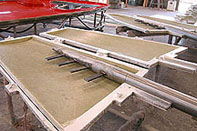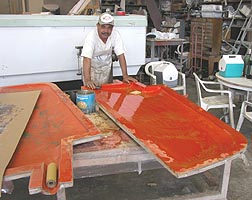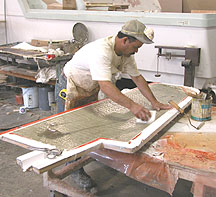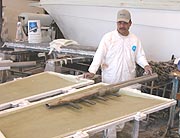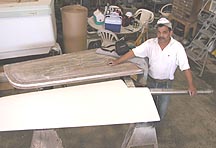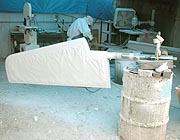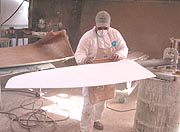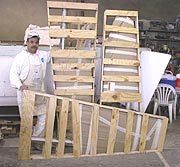


Call (949)
|
Home |
||
About Us |
||
Manufacturing Process |
||
Rudder Photos |
||
Contact Us |
||
The Foss Rudder Manufacturing Process |
||||||||||||||||||||||
The construction of our rudders has changed considerably through the years in order to improve strength, durability, and reliance. The closed cell foam core of the rudder has remained the same. But the selective addition of unidirectional fibers has increased the strength of our rudders, and the use of Vinylester™ resins has eliminated blisters and the need for expensive barrier coats. All of our Foss Foam rudders come sanded and ready for bottom paint, and they can be shipped anywhere in the world. If necessary, we have the capability to use a special "vacuum bag" production process to create especially strong rudders. We can also use core materials of various densities, or use carbon fiber in order to construct high performance parts and components. Here is a closer look at how we manufacture our most popular line of rudders: Rudder Construction Process
For more information about our line of Foss Foam replacement rudders, please call (949) 646-0244 or contact us at our offices in Newport Beach, California. |
||||||||||||||||||||||
Post
Office Box 3698 • Newport
Beach, California 92659
Phone: (949) 646-0244 • Fax: (714) 972 2832
|
